Single-Cell RNA Sequencing Integrated with Bulk-RNA Sequencing Analysis Reveals Prognostic Signatures Based on PANoptosis in Hepatocellular Carcinoma
- PMID: 40761429
- PMCID: PMC12318859
- DOI: 10.2147/JHC.S533777
Single-Cell RNA Sequencing Integrated with Bulk-RNA Sequencing Analysis Reveals Prognostic Signatures Based on PANoptosis in Hepatocellular Carcinoma
Abstract
Purpose: Drug resistance severely compromises therapeutic efficacy in hepatocellular carcinoma (HCC); however, the selection of precise treatment strategies for patients remains a critical unmet clinical need. This study investigated PANoptosis-related mechanisms underlying HCC progression to identify actionable therapeutic targets and optimize patient-specific treatment outcomes.
Patients and methods: Multi-omics analysis (single-cell/bulk RNA sequencing) combined with machine learning was used to identify the PANoptosis-related prognostic features. The association of PANoptosis-related expression with the tumor immune microenvironment and drugs was explored using bioinformatic analysis and experimental studies.
Results: High PANoptosis risk exhibited immunosuppressive microenvironments and therapeutic resistance. The PANoptosis-related gene YIF1B has emerged as a dual prognostic biomarker and tumor driver that promotes proliferation, and is linked to immune dysfunction and drug resistance.
Conclusion: YIF1B may be a promising therapeutic target. This PANoptosis framework bridges molecular mechanisms to clinical management, offering strategies for personalized HCC therapy and overcoming treatment resistance.
Keywords: PANoptosis; YIF1B; drug resistant; hepatocellular carcinoma.
© 2025 Wang et al.
Conflict of interest statement
The authors declare no competing interests for this work.
Figures
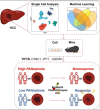
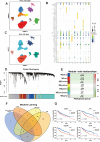
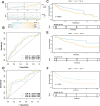

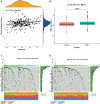
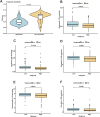
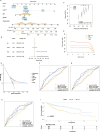

Similar articles
-
PANoptosis-associated genes exhibit significant potential in the diagnosis of hepatocellular carcinoma.J Gastrointest Oncol. 2025 Jun 30;16(3):1105-1114. doi: 10.21037/jgo-2025-356. Epub 2025 Jun 27. J Gastrointest Oncol. 2025. PMID: 40672091 Free PMC article.
-
PANoptosis-driven molecular stratification in esophageal squamous cell carcinoma: A multi-omics prognostic model and FGFR-Targeted therapeutic validation.Comput Biol Med. 2025 Sep;196(Pt A):110688. doi: 10.1016/j.compbiomed.2025.110688. Epub 2025 Jul 8. Comput Biol Med. 2025. PMID: 40628169
-
Multi-omics approaches for identifying the PANoptosis signature and prognostic model via a multimachine-learning computational framework for intrahepatic cholangiocarcinoma.Hepatology. 2025 Apr 15. doi: 10.1097/HEP.0000000000001352. Online ahead of print. Hepatology. 2025. PMID: 40233411
-
Novel diagnostic and therapeutic strategies based on PANoptosis for hepatocellular carcinoma.Cancer Biol Med. 2025 Jul 8:j.issn.2095-3941.2025.0150. doi: 10.20892/j.issn.2095-3941.2025.0150. Online ahead of print. Cancer Biol Med. 2025. PMID: 40626832 Review.
-
Cost-effectiveness of using prognostic information to select women with breast cancer for adjuvant systemic therapy.Health Technol Assess. 2006 Sep;10(34):iii-iv, ix-xi, 1-204. doi: 10.3310/hta10340. Health Technol Assess. 2006. PMID: 16959170
References
LinkOut - more resources
Full Text Sources

